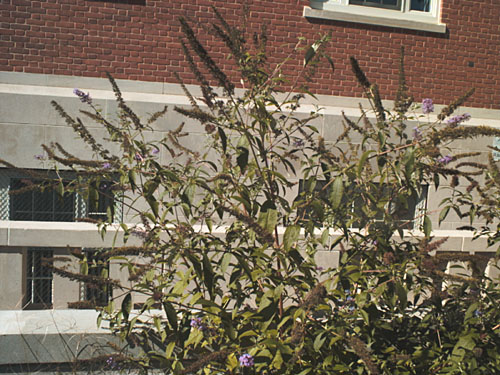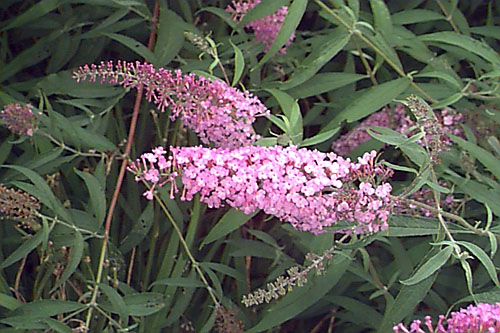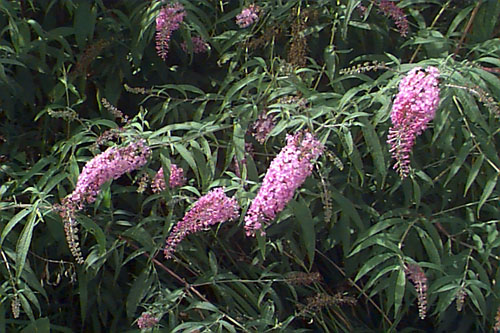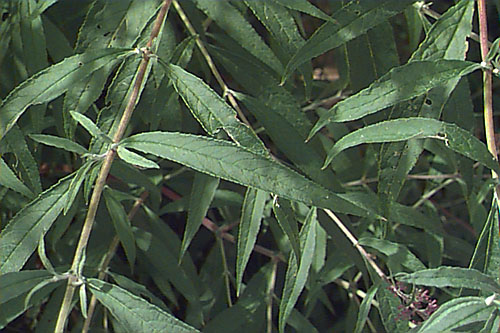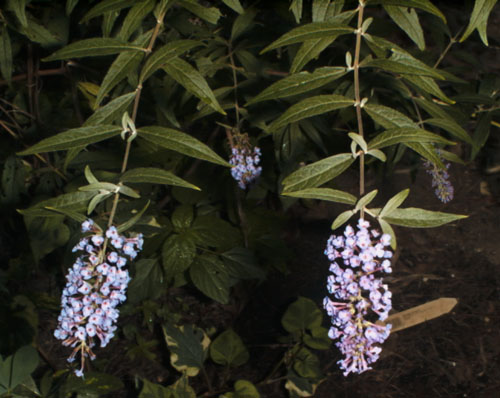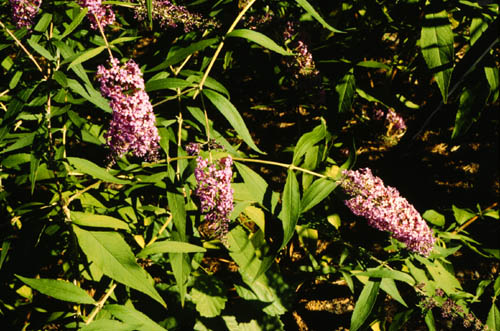Buddleia davidii
Butterfly Bush, Summer Lilac
Loganiaceae
ExpandHabitat
- native to China
- hardy to zone 5, although it performs better in zone 6 and warmer
- Special Note: This species has demonstrated an invasive tendency in Connecticut, meaning it may escape from cultivation and naturalize in minimally managed areas. For more information, .
Habit and Form
- a large deciduous shrub 5' to 10' tall
- produces large arching canes
- typically dies to the ground in zones 5 and 6
- a rather unkempt growth habit
- can grow 5' to 8' from the ground in a single season
Summer Foliage
- opposite leaves
- simple, lanceolate 4" to 10" long and 1" to 3" wide
- margins very finely toothed
- leaves a gray green to green above and white and fuzzy on the underside
- stems pubescent and prominently angled
- petioles are short
Autumn Foliage
- no fall color
- some leaves persist late into the fall
Flowers
- showy
- 4" to 10" long upright or nodding racemes
- the common color is lilac with orange in the throat
- available in pink, red, purple, and white as well
- attractive to butterflies and moths
- bloom time is from mid- to late summer until frost
- blooms on current season wood
Fruit
- small capsules
- not of ornamental importance
Bark
- new stems are greenish
- older stems develop gray-brown bark that exfoliates slightly in vertical shreds
Culture
- remove winter-killed stems at a minimum
- probably best to prune to the ground in spring in zones 5 and 6
- remove past flowers to encourage continued bloom
- full sun
- performs best in fertile soils
- easily transplanted
Landscape Use
- useful for summer bloom
- to attract butterflies
- use in masses, not as specimen
- perhaps it is better to treat this species more like an herbaceous perennial than a woody shrub
- often used effectively when incorporated in a perennial planting
Liabilities
- lack of winter hardiness in zones 5 and 6
- somewhat unkempt appearance can be detractive
- relatively high maintenance plant
- tends to self sow
ID Features
- naked buds, opposite arrangement
- pubescent new growth
- striking racemous flowers
- short petioles
Propagation
- seed germinates readily
- cultivars by cuttings; excessive moisture following rooting can kill the cuttings
Cultivars/Varieties
Numerous cultivars exist and more are released every year, thus a full listing is impossible. The choices below are included merely to show the range of forms available.
var. nanhoensis - A more dwarf, compact form (4'-8' tall). Hybrids with this parent include 'Nanho Alba', 'Nanho Blue' and 'Nanho Purple'. These are dwarf forms bearing flowers of the colors listed.'Black Knight' - Dark purple flowers, vigorous and slightly more cold hardy than the species.
'Dartmoor' - Notable for the branched inflorescences with magenta/purple blooms. A large grower with an impressive floral display.
'Empire Blue' - Flowers violet-blue with an orange eye. Upright growth habit.
'Fascination' - Lilac-pink flowers on large panicles 13" to 18" long. Vigorous grower.
'Harlequin' - White and green variegated foliage with reddish purple flowers. Less vigorous than green forms.
'Honeycomb' - A hybrid that is perhaps the most popular of the yellow-flowered forms.
'Lochinch' - A hybrid which, in its true form, is more dwarf and compact (to 6'-8' tall) with smaller leaves that are covered in a silvery pubescence. The flowers are lavender with an orange eye and occur in smaller clusters (5"-6" long).
'Royal Red' - Considered the best red-flowered form. Panicles up to 20" long.
'White Profusion' - White flowers, but only 6" to 8" long panicles.
